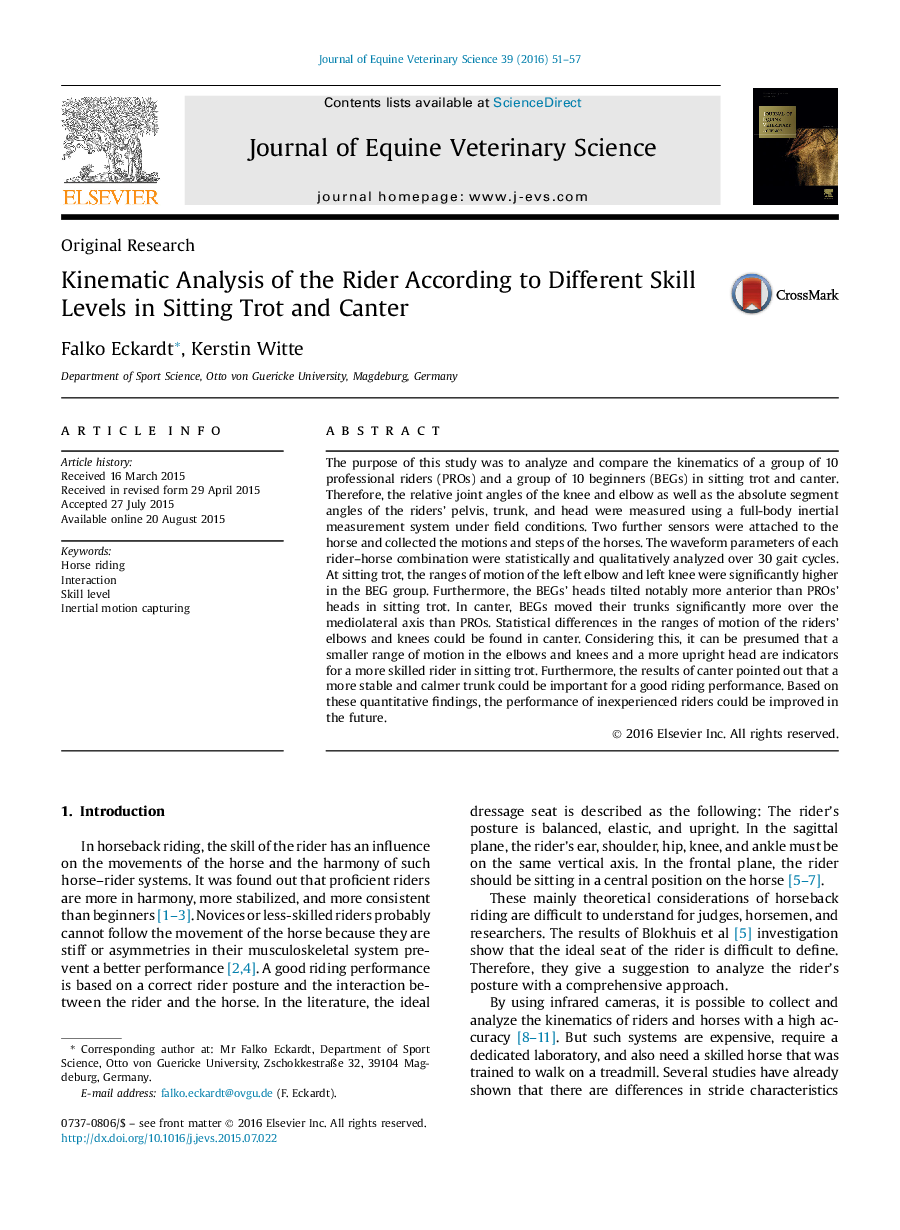| کد مقاله | کد نشریه | سال انتشار | مقاله انگلیسی | نسخه تمام متن |
|---|---|---|---|---|
| 2394571 | 1551561 | 2016 | 7 صفحه PDF | دانلود رایگان |
• Kinematic analysis of 10 professional riders and 10 beginners in sitting trot and canter.
• The rider's relative joint angles and the absolute segment angles were measured using a full-body inertial measurement system.
• In ST, the range of motion of BEGs' left elbows and left knees was significantly higher than that of the PROs'.
• In ST, BEGs' heads tilted significantly more anterior than PROs' heads.
• In CL, BEGs moved their trunks significantly more over the mediolateral axes than PROs.
The purpose of this study was to analyze and compare the kinematics of a group of 10 professional riders (PROs) and a group of 10 beginners (BEGs) in sitting trot and canter. Therefore, the relative joint angles of the knee and elbow as well as the absolute segment angles of the riders' pelvis, trunk, and head were measured using a full-body inertial measurement system under field conditions. Two further sensors were attached to the horse and collected the motions and steps of the horses. The waveform parameters of each rider–horse combination were statistically and qualitatively analyzed over 30 gait cycles. At sitting trot, the ranges of motion of the left elbow and left knee were significantly higher in the BEG group. Furthermore, the BEGs' heads tilted notably more anterior than PROs' heads in sitting trot. In canter, BEGs moved their trunks significantly more over the mediolateral axis than PROs. Statistical differences in the ranges of motion of the riders' elbows and knees could be found in canter. Considering this, it can be presumed that a smaller range of motion in the elbows and knees and a more upright head are indicators for a more skilled rider in sitting trot. Furthermore, the results of canter pointed out that a more stable and calmer trunk could be important for a good riding performance. Based on these quantitative findings, the performance of inexperienced riders could be improved in the future.
Journal: Journal of Equine Veterinary Science - Volume 39, April 2016, Pages 51–57
